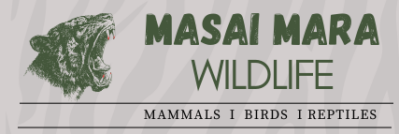The current status of giraffe populations globally is of concern, as giraffe numbers have significantly declined over the past few decades. Giraffes are listed as vulnerable on the IUCN Red List due to a combination of habitat loss, poaching, and human-wildlife conflict.
Here is a detailed breakdown of giraffe populations and their current status:
1. Overall Population
- Global Population: Around 117,000 individuals (as of 2023).
- Decline: Giraffe populations have decreased by approximately 40% over the last 30 years, often referred to as a “silent extinction” because it has occurred with relatively little public awareness.
2. Subspecies and Their Status
Giraffes are divided into four species and several subspecies, each facing different conservation challenges.
- Northern Giraffe (Giraffa camelopardalis): This species is considered critically endangered due to a population of less than 5,600 individuals. It includes the following subspecies:
- Kordofan Giraffe (G. c. antiquorum): Endangered.
- Nubian Giraffe (G. c. camelopardalis): Critically Endangered.
- West African Giraffe (G. c. peralta): Vulnerable, with small, isolated populations.
- Masai Giraffe (Giraffa tippelskirchi): The Masai giraffe, native to Kenya and Tanzania, is classified as endangered. According to IUCN estimates, there are approximately 32,550 Masai giraffes in the wild, but their populations have declined by over 50% due to poaching and habitat loss.
- Reticulated Giraffe (Giraffa reticulata): This species is classified as endangered, with fewer than 15,000 individuals remaining, mostly found in northern Kenya, Somalia, and southern Ethiopia.
- Southern Giraffe (Giraffa giraffa): The southern giraffe has a more stable population and is classified as vulnerable. It consists of the following subspecies:
- Angolan Giraffe (G. g. angolensis): Least Concern.
- South African Giraffe (G. g. giraffa): Least Concern, with populations recovering in some areas due to conservation efforts.
3. Key Threats
- Habitat Loss and Fragmentation: Expansion of agriculture, deforestation, and urban development have led to significant loss of giraffe habitat, particularly in West, Central, and East Africa.
- Poaching: Giraffes are often poached for bushmeat, skins, and sometimes for the international trade in their parts, such as bones and tails.
- Human-Wildlife Conflict: As human populations expand into giraffe habitats, conflicts increase. Giraffes often suffer when they come into contact with agricultural lands or infrastructure.
- Climate Change: Altered rainfall patterns and droughts are reducing the availability of food and water for giraffes, especially in arid and semi-arid regions.
4. Conservation Efforts
Various conservation initiatives are underway to reverse the declining trends, such as:
- Habitat protection and restoration.
- Community-based conservation programs that involve local people in protecting giraffes and benefiting from ecotourism.
- Anti-poaching patrols and law enforcement to reduce illegal hunting.
- Research and monitoring programs, such as GPS tracking and population surveys, to gather data on giraffe movements and survival rates.
- Translocation programs that relocate giraffes to areas where they are at lower risk or where populations have dwindled.
Conclusion:
While giraffe populations have seen significant declines, global conservation efforts are making strides to stabilize and, in some cases, recover their numbers. Nevertheless, continuous action is required to ensure the survival of giraffes, particularly the critically endangered and vulnerable subspecies.
